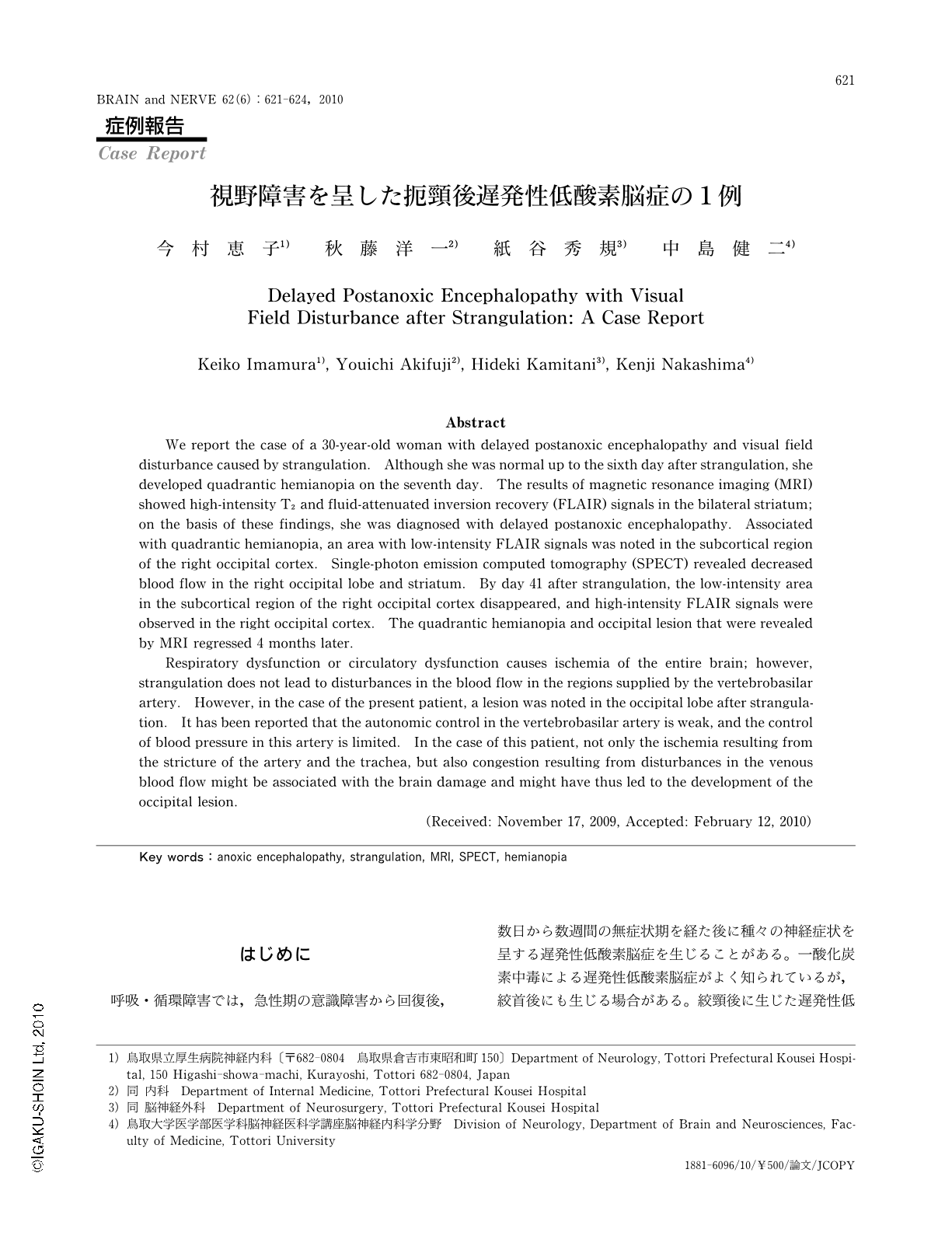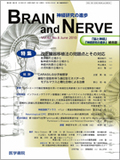Japanese
English
- 有料閲覧
- Abstract 文献概要
- 1ページ目 Look Inside
- 参考文献 Reference
はじめに
呼吸・循環障害では,急性期の意識障害から回復後,数日から数週間の無症状期を経た後に種々の神経症状を呈する遅発性低酸素脳症を生じることがある。一酸化炭素中毒による遅発性低酸素脳症がよく知られているが,絞首後にも生じる場合がある。絞頸後に生じた遅発性低酸素脳症では,線条体に障害をきたしてアテトーゼやジストニアを生じた例が報告されている1,2)。呼吸・循環不全では全脳に対して低酸素による障害を生じるが,絞頸や扼頸では椎骨・脳底動脈系の血流は障害されにくく,その支配領域は虚血を免れると考えられている2)。われわれは,扼頸による意識障害から回復後,遅発性に視野障害を生じ,後頭葉病変を認めた症例を経験したので報告した。
Abstract
We report the case of a 30-year-old woman with delayed postanoxic encephalopathy and visual field disturbance caused by strangulation. Although she was normal up to the sixth day after strangulation,she developed quadrantic hemianopia on the seventh day. The results of magnetic resonance imaging (MRI) showed high-intensity T2 and fluid-attenuated inversion recovery (FLAIR) signals in the bilateral striatum; on the basis of these findings,she was diagnosed with delayed postanoxic encephalopathy. Associated with quadrantic hemianopia,an area with low-intensity FLAIR signals was noted in the subcortical region of the right occipital cortex. Single-photon emission computed tomography (SPECT) revealed decreased blood flow in the right occipital lobe and striatum. By day 41 after strangulation,the low-intensity area in the subcortical region of the right occipital cortex disappeared,and high-intensity FLAIR signals were observed in the right occipital cortex. The quadrantic hemianopia and occipital lesion that were revealed by MRI regressed 4 months later.
Respiratory dysfunction or circulatory dysfunction causes ischemia of the entire brain; however,strangulation does not lead to disturbances in the blood flow in the regions supplied by the vertebrobasilar artery. However,in the case of the present patient,a lesion was noted in the occipital lobe after strangulation. It has been reported that the autonomic control in the vertebrobasilar artery is weak,and the control of blood pressure in this artery is limited. In the case of this patient,not only the ischemia resulting from the stricture of the artery and the trachea,but also congestion resulting from disturbances in the venous blood flow might be associated with the brain damage and might have thus led to the development of the occipital lesion.
(Received: November 17,2009,Accepted: February 12,2010)

Copyright © 2010, Igaku-Shoin Ltd. All rights reserved.


